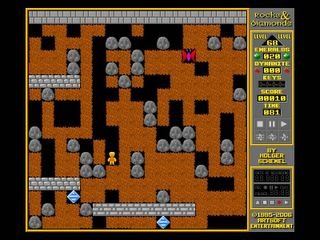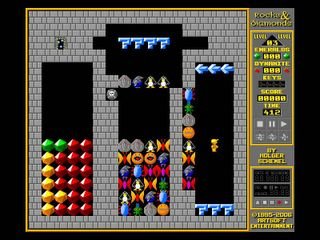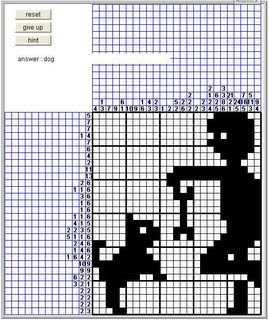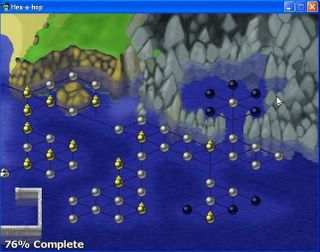Cubrius
Name: Cubrius
Author: Digital Seed Entertainment
License: Commercial
Website: http://www.cubrius.com/
I download and try a lot of games. I can usually tell pretty quickly about a game. I recently decided to give Cubrius a spin and got a surprise. Five minutes in, my thoughts were "seen it, done it, easy, nothing new." Then I hit Training Level 1 and was thrown for a loop. This turns out to be one demandingly difficult game with some very interesting puzzles.
Cubrius is a curious combination of Rings of the Magi and sokoban. Your goal is to remove all of the cubes. As in Rings of the Magi, when similarly colored cubes are pushed next to each other, they are eliminated. Unlike Rings of the Magi, you cannot push any cube you want. Like sokoban, you can only push cubes which your character has access to. In order to make certain moves, you may have to open areas up with careful planning.
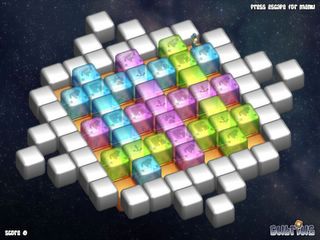
Cubrius also adds some interesting twists. There are anchor cubes which cannot be moved. Puzzle cubes can only be eliminated by moving them next to another puzzle cube of the same color. After a pet cube gets eliminated, any later pushes of a cube of that color eliminates the cube. This can both help and hurt. Finally, joker cubes destroy cubes of their color and other joker cubes of any color.
There is a free flash version of Cubrius which contains two stage packs and 33 levels. Then there is a downloadable version which you can purchase. It contains two additional stage packs and 30 levels. I am guessing more stage packs are in the works.
The good: nice graphics, nice audio, no bugs, and some really tough puzzles. The bad: only 30 additional levels in the purchased version, no level editor, slightly confusing menus (hint: use the space bar), and in each stage pack you have to complete level i to access level i+1. Given the difficulty of the puzzles, this last one really hurts Cubrius. Reading some forums, I am sure it has cost them sales. When will game designers learn?
The really interesting question about Cubrius is why are the puzzles so hard? Actually, why are they so hard for humans? I do not have a good answer. I am willing to bet that solving Cubrius puzzles is NP-complete. However, I wrote a quick and dirty program to get solve Cubrius levels and found that the search space is quite small. Hmm???
The more practical question is whether you should buy this game? First play through the two stage packs which come with the flash version. Then decide if 30 levels are worth $17 to you. Or wait to see if more stage packs are in the wings.
